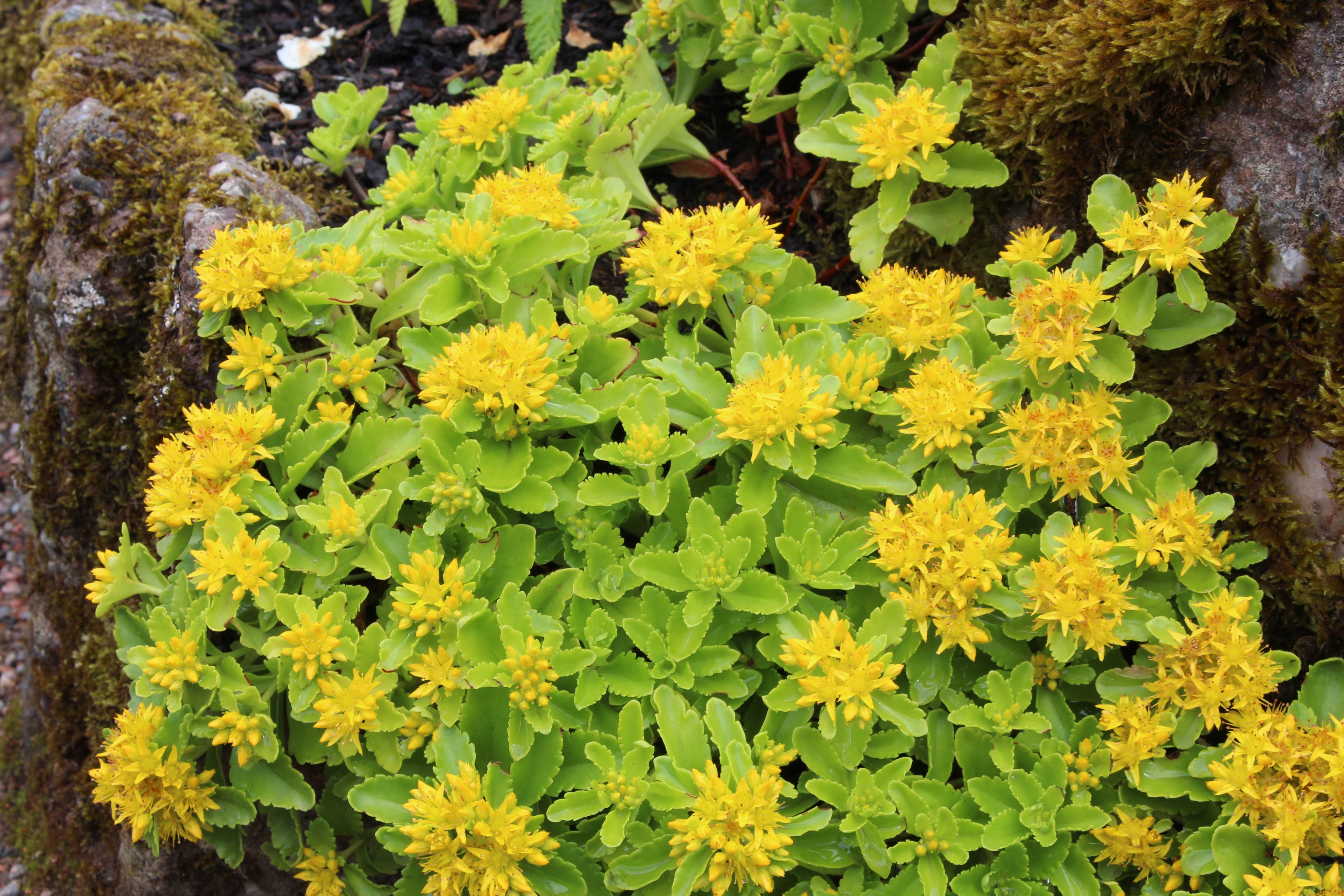Sedum kamtschaticum
Approx. 0.5 litre pot
About this cultivar:
Sedum kamtschaticum an attractive semi-evergreen groundcover with rich green, toothed leaves and a dense creeping habit. Bright orange-yellow flowers which are produced in early summer eventually give way to rusty red seed capsules that add colour to the autumn garden. The species name is in reference to the Kamchatka Peninsula which juts out into the Pacific Ocean from the far eastern Coast of Siberia.
Low, spreading sedums form a solid mat of foliage which is excellent for covering slopes, walls, path edges, etc. Or can be planted as a groundcover in sunny, dry areas. Terrific low-maintenance plants that always look their best.
Grows great with us but not in our wetter areas!
- Position: Full sun, partial shade
- Soil: Almost any soil (except waterlogged areas)
- Flowers: August, September, October
- Other features: Grows well in Ballyrobert, Great Ground Cover
- Hardiness: H7 - Hardy in the severest European continental climates (< -20°C), Fully hardy, grows well in Ballyrobert
- Habit: Clump forming
- Foliage: Semi evergreen
- Height: 10 - 20 cm (0.3 - 0.6 ft)
- Spread: 30 - 45 cm (1- 1.5 ft)
- Time to full growth: 2 to 5 years
- Plant type: Herbaceous Perennial
- Colour: Green, yellow
- Goes well with: Walls, paths, groundcover
About this genus:
Sedum (see-dum) is a huge genus of flowering plants in the family Crassulaceae, members of which are commonly known as stonecrops, orpine, or even waterplants. The name Sedum comes from Latin to assuage, from the healing properties it was supposed to have.
The genus has been described as containing up to 600 diverse species of leaf succulents that are found throughout the Northern Hemisphere, varying widely in height and size. The plants have water-storing leaves - hence one of the common names. Most Sedum are known for their colourful, fleshy, succulent foliage and yellow, pink, or white flowers. Sedum foliage colour can include green, purple, blue, yellow, or even variegated with multiple colours. In the autumn sedum leaves may take on reddish or copper hues.
Tough yet delightful, beloved by butterflies and bees, these succulent perennials flourish even in lean and mean soils. The blooms assert a decidedly horizontal element to the garden as long lasting, flat umbels of starry flowers emerge from buds in broccolilike clusters. Supported by stout, sturdy stems, the blooms mature through a range of colours, extending the visual delight well into winter.
In nature, most Sedum occur in light shade while a few are also well-adapted to full sun situations. Their xeric nature makes Sedums popular for use in rock gardens, roof gardens, wall gardens, and living wreaths. However the cultivars we grow and offer here do well in our heavy clay soil and damp - so they are a versatile plant.
Try pairing tall Sedum with plants like Kniphofia, Hemerocallis, Salvia, and Euphorbia. The shorter Sedum look great filling in the ground beneath things like Paeonia, Rudbeckia, and Iris. I think they look best at the front of the border or by a path - they make a great sight the way they capture water droplets and people always stop to look!


